Diane Greenhalgh
Tiny to the Max
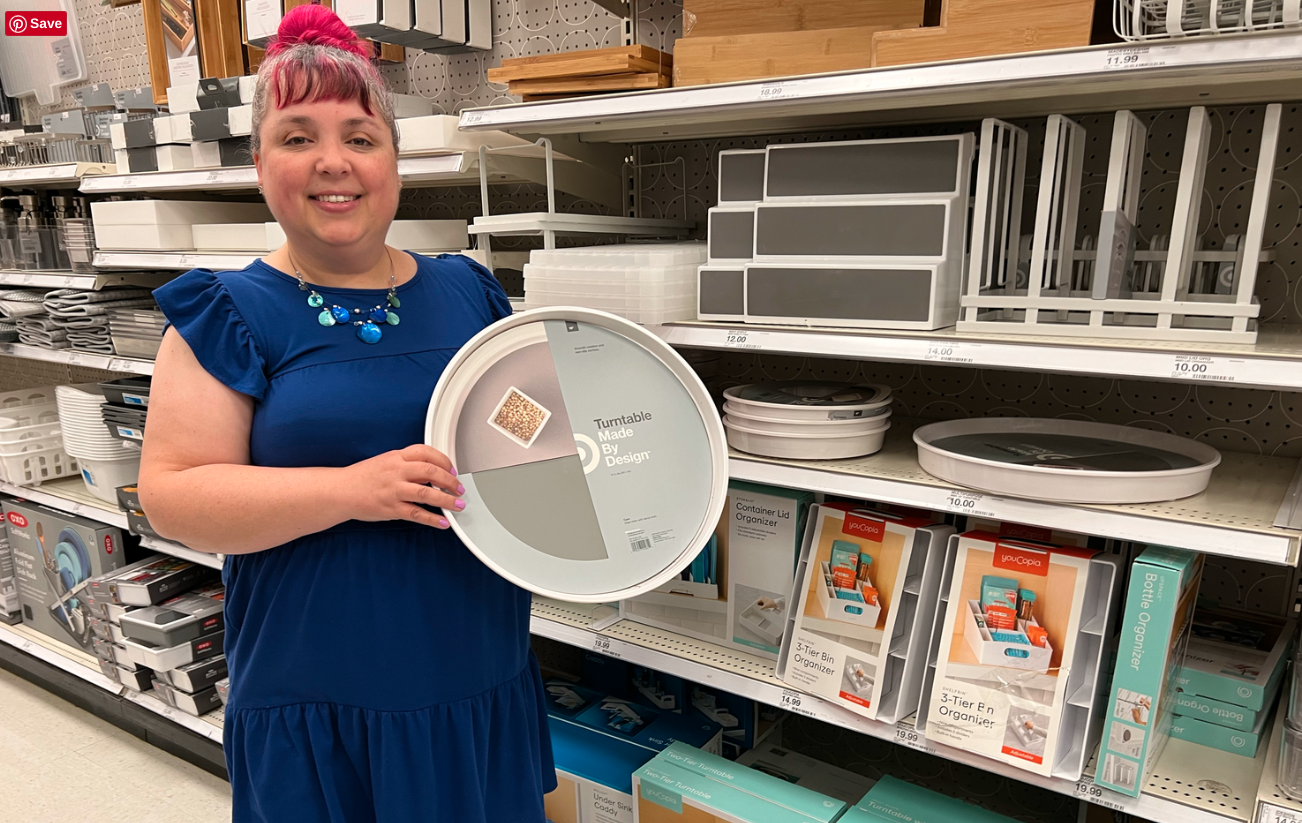
*We've evaluated all the recommended products here and make no financial gain if you purchase something. We don’t care about making money from this list, we just want to help you love (and organize) your space.
If you're anything like us, you love tiny living. But maybe, right now, you're feeling like tiny living means there's not enough space for the stuff you need. But who says you need a ton of space to live large?
We're here to tell you it's all about maximizing the space you've got, so we've compiled a list of the best organizing products for small spaces. These must-haves will help you maximize your small space and bring simplicity (and maybe even a smile!) to your daily life. From sleek over the door organizers to versatile lap desks, we've curated a list of the best organizing products that promise to create more room, improve efficiency, and make your home happier. Let's dive in!
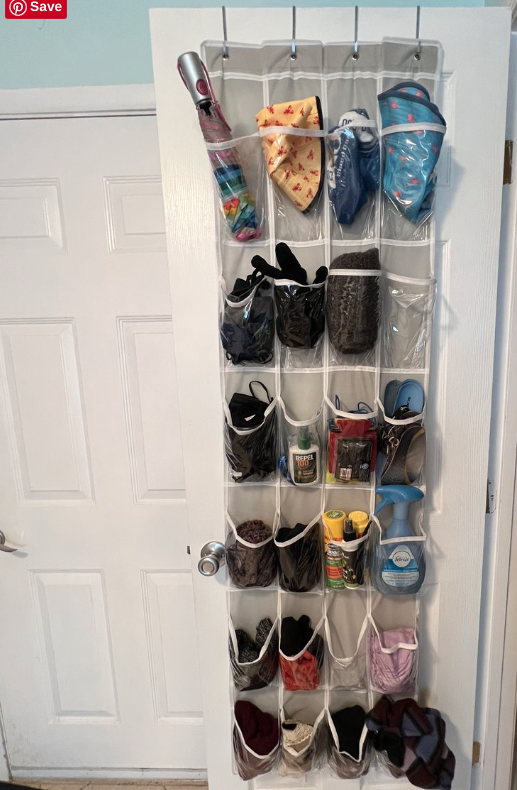 1. Over the door shoe organizer with pockets
1. Over the door shoe organizer with pockets
Over the door shoe organizers with pockets are a dream come true! Whether you go with the Gorilla Grip Shoe Holder Rack, the MISSLO Large Over the Door Organizer, or the Container Store's 24-Pocket Mesh Over the Door Shoe Bag, they can all hold a surprising amount of weight and offer a fantastic solution for keeping all kinds of things in order without taking up precious floor space.
Don't let the word "shoe" in this organizer's title fool you because they are best used for everything but shoes unless you have tiny feet, like with kids, or use them for flip-flops.
You can store almost anything in your home—accessories, toiletries, and even pantry items. Remember, in a tiny space, every inch counts. Our favorites are the ones with multiple mesh pockets, so it's easy to see and access what you've stored.
2. Behind cabinet door organizers 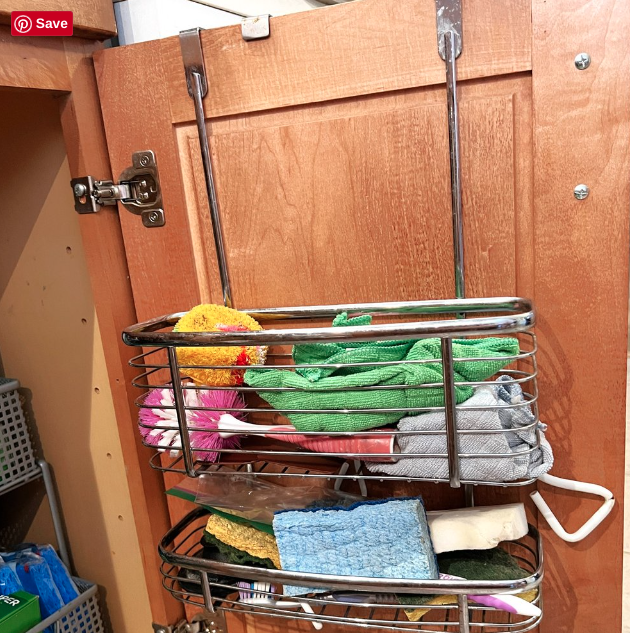
This next one offers a clever solution for holding items that can otherwise clutter your space, such as bags, cleaning supplies, paper towels, and even hair dryers. Their design utilizes the often-overlooked and typically unusable space behind cabinet doors, making them an ideal choice for those looking to maximize every inch of their home.
With various designs and materials, you'll find the perfect match for your needs and style. Some are simple, with a tray or two to store items. And some even feature specific compartments for items like paper towels or hair dryers.
One of the significant advantages of these organizers is accessibility. They're always within reach, saving you from rummaging around in cluttered cabinets or drawers. Plus, their position behind the cabinet door keeps them out of sight for a clean and uncluttered look.
You can find them on Amazon, Target, and Wayfair to start maximizing that valuable space behind your cabinet doors.
 3. Adjustable closet rod
3. Adjustable closet rod
This nifty simple closet tool is a game-changer for your wardrobe organization. This innovative product, like the ClosetMaid Double Hang Closet Rod, can be easily clipped onto your existing closet rod, instantly doubling your hanging space. Its adjustability ensures it fits seamlessly, no matter your closet size.
Constructed of durable, powder-coated steel, it provides reliable support for your garments. With its deep nickel finish, it not only maximizes your storage but also adds a touch of class to your closet. Moreover, this versatile rod is not limited to clothes. You can use it to hang accessories, bags, or hats, making it an all-around closet organizer.
It's an ideal organizing solution for people who want flexibility in a small closet and for increasing accessibility for shorter individuals, people in wheelchairs, and children who may struggle with reaching higher rods.
The ClosetMaid rod is our top pick, and you can grab it at retailers like Amazon, Bed Bath & Beyond, and Walmart. There are other types, like this one pictured above from Umbra, available at The Container Store®.
4. Space-saving hangers 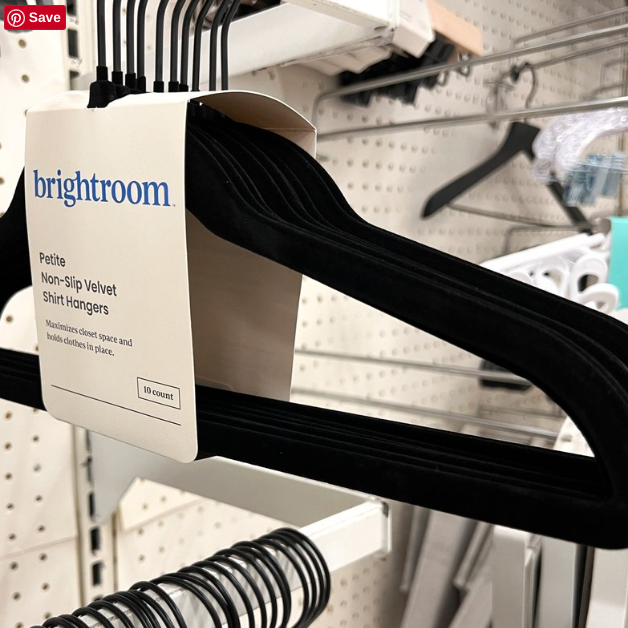
Living small means making every inch count, especially in your wardrobe. So space-saving hangers are a stylish fix for a cramped closet.
Skinny velvet or felt hangers are the best for this. They're slimmer than old-school hangers and keep your clothes from slipping off (and having to hang them up again!). Plus, getting them with the sturdy bar at the bottom means no stretching or poking your favorite sweater while you're hanging it.
Want an even cleaner-looking closet? Try color-coordinating your hangers. Cohesive hanger colors can reduce visual noise and make your closet feel more spacious.
There are so many options for colors and brands of space-saving hangers. You can even get kid and petite sizes. The best deal is from Costco, but you can also grab some from Amazon, Walmart, Target, or The Container Store®.
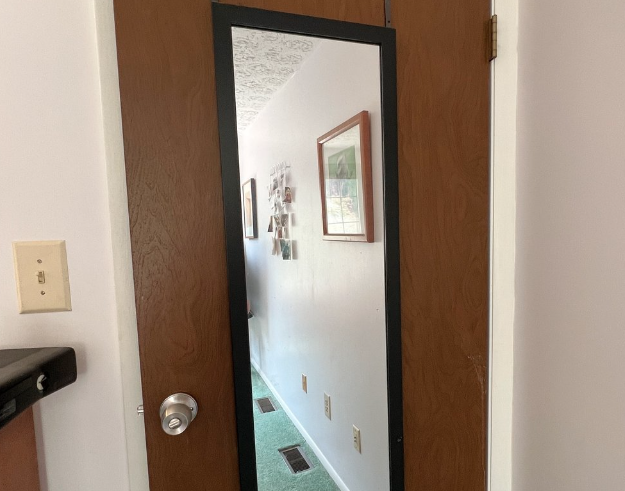 5. Over the door mirror
5. Over the door mirror
If you're a frequent mover or renting your space, an Over Door Mirror is your new best friend. It's the smart answer to the pesky problem of mounting and unmounting mirrors or struggling with mirror clips and ending up with a warped reflection.
The Beauty4U Over the Door Adjustable Hanging Mirror has our vote as the best choice. It gives you a full-length view minus the floor clutter and is a breeze to install. But what sets it apart is its adjustability. You can position it at just the right height, making it perfect for individuals of varying heights, including children or people who use wheelchairs.
Some other over-the-door mirror models even have hidden storage for your jewelry or accessories. And some are just plain dreamy with modern details and finishes like this super long one from Bed Bath & Beyond. Whatever model you get, it's not just a mirror; it's a space-saving, style-enhancing accessory for your home.
6. Slim rolling cart 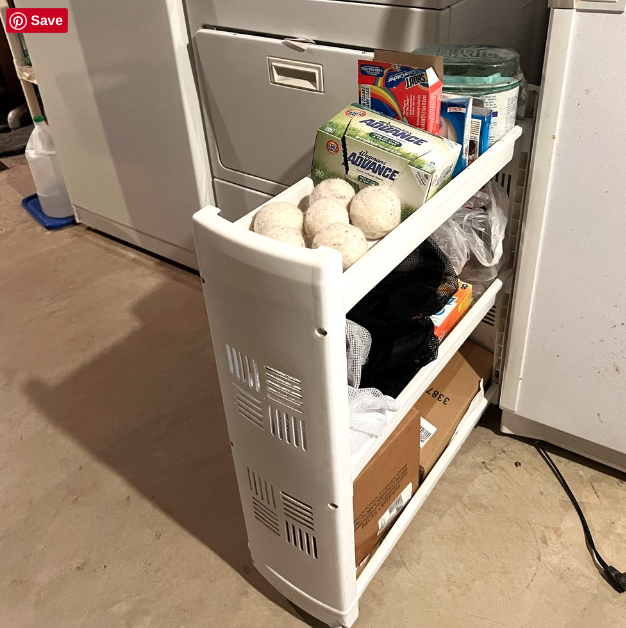
With its smooth-gliding wheels, this nifty little helper is designed to seamlessly navigate through your home, fitting snugly into even the smallest corners. It's sleek, it's functional, and it's ready to revamp your storage strategy.
We love that it's a versatile storage solution that shines in any setting:
-
In the kitchen, it becomes a mobile pantry for cans, spices, or utensils.
-
In the laundry room, it serves as a convenient holder for laundry essentials, easily sliding into narrow spaces.
-
For crafty folks, this cart transforms into an organized craft station with easy access to supplies.
-
In the bathroom, it becomes extra storage you can slip in a small space that’s flexible because you can move it around.
-
In a bedroom, it can be a unique nightstand alternative.
Regardless of the room, a slim rolling cart blends style and functionality, making it an invaluable addition to any home.
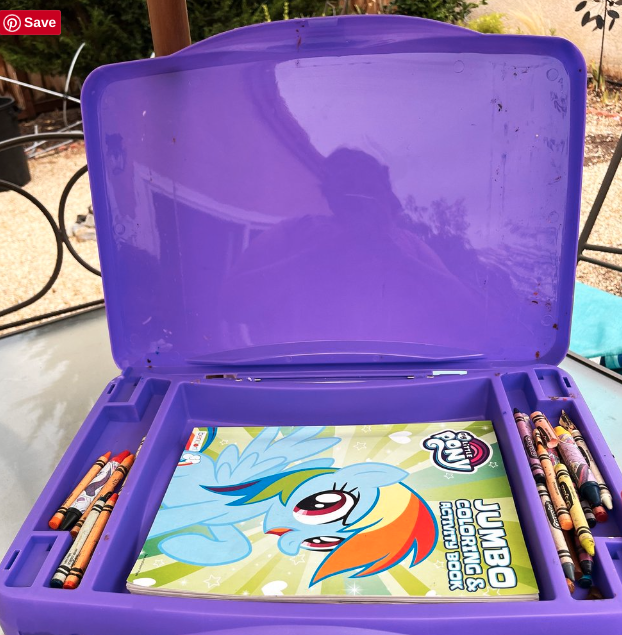 7. Portable lap desk with storage
7. Portable lap desk with storage
Compact and foldable, this Portable Lap Desk with Storage is designed to make the most of your space, even if that space is your lap. Whether you're a work-from-home pro or a student cramming for exams, the desk offers a stable spot for your laptop or tablet.
Ideal for small homes in need of flexibility, people who need a change of scenery, or kids who love being around their parents, it moves easily from room to room or even outdoors. When you're done, just fold it and tuck it away to save space.
Speaking of space... Despite its size, it doesn't skimp on storage! There's plenty of room for your essentials, like stationery and notebooks.
Other portable desk options can be found at Target, Wayfair, and Walmart.
8. Corner dish shelf 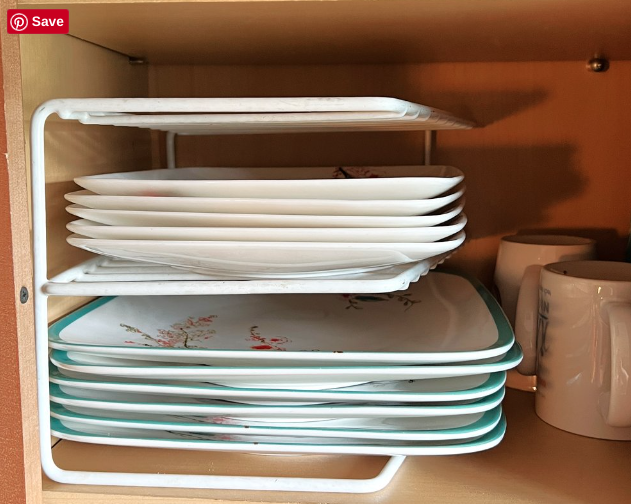
mDesign's Corner Shelf is a great option for those looking to maximize their kitchen storage. We like to use it to stack plates so you don’t have to lift a pile to get to the size you want.
Another option is this Bamboo 3 Tier Plate Rack, made from natural bamboo it can easily organize your dishes. The three-tiered design takes even more advantage of vertical space if you can’t adjust your shelves, which is a critical factor in compact areas. So instead of sprawling across your counters, these shelves grow upwards - keeping your countertops clutter-free while ensuring your dishes are always within arm's reach.
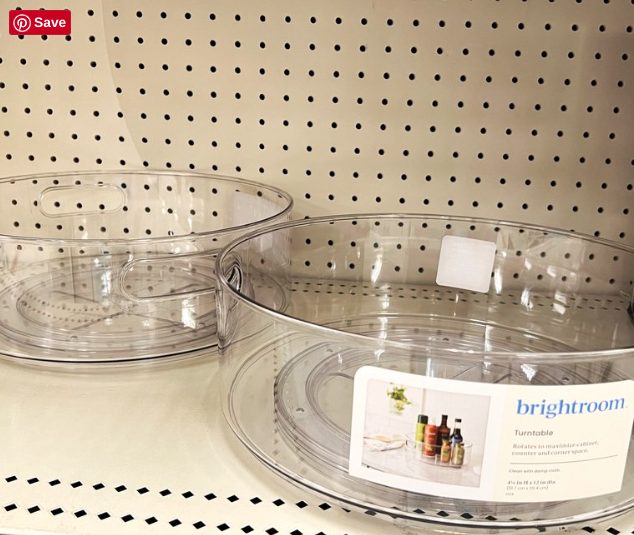 9. Turntable
9. Turntable
With its 360-degree rotation, the turntable (sometimes called a Lazy Susan) is a game-changer, ending those frustrating moments spent rummaging at the back of cabinets. With just a quick spin, everything you need is within reach.
What makes a turntable so special is its straightforward (and round!) design. Whether nestled in your pantry, fridge, or bathroom cabinet, this organizer ensures every item has a designated spot within easy reach.
And it really shines in the kitchen. A two-tiered Lazy Susan is perfect for housing spices. Round spice jars on a round turntable? It's a match made in heaven! With this addition to your kitchen, it's so easy to find the paprika without knocking over the pepper.
But it's also a dream for storing canned goods in your pantry or even cleaning supplies. For those items, we recommend grabbing a turntable model with a lip to keep everything in place (instead of toppling off if you spin it too hard). Some turntables are open with a lip around the edge, and some are divided into sections. The Container Store® has oodles of turntable options, so check them out.
10. Corner shower caddy 
When organizing small bathrooms, a corner shower caddy is your best friend. It offers ample storage without taking up significant space. Whether you have a tub or a standalone shower, this versatile organizer fits seamlessly into any layout.
The Kadolina Corner Shower Caddy brings organization and style into your space, along with four tiers! That's perfect for stashing your shampoos, conditioners, body washes, and even a rubber ducky.
Similarly, the Rebrilliant Eisenman Tension Pole promises plenty of storage space, rust resistance, and sturdiness, translating to years of squeaky-clean service. We love the unique soap dish and hooks!
And another great option is the Zenna Home Chrome 4-Shelf Tension Pole. It has the tiers and the tension rod to make it fit in any space, but it also features a built-in towel bar because who doesn't love a multi-tasking product? With this caddy, you finally have a spot in the shower to hang your washcloth where you can actually reach it!
How to choose the best organizers for small spaces
FUNCTIONALITY FIRST
When you're on the hunt for the best organizing products, think about their functionality first and foremost. You want items that solve specific storage struggles you're facing, are adaptable, and can be used in various ways.
A great example is the over the door shoe organizer we shared above. It isn't just a kid's shoe rack in a closet; the same organizer could be a home for your accessories or a pantry space expansion.
SIZE AND DESIGN
Every square inch counts when you're working with a small space. Opt for compact, space-saving organizers that seamlessly blend with your aesthetic. Don't overlook vertical space—wall-mounted shelves or racks can transform your area. And be sure to measure the space before you make your purchase.
QUALITY MATERIALS
While you're shopping, look for durable materials like steel, bamboo, or heavy-duty plastics. Steel has a modern flair and resilience, while bamboo offers a warm, eco-friendly vibe. Heavy-duty plastics are lightweight, budget-friendly, and come in various colors to match your decor.
Maintenance matters, too, when you're thinking about what materials you want. Choose materials that won't give you a headache when cleaning time comes around. If you're eyeing fabric organizers, make sure they're either washable or armed with a protective shield against stains and spills. Or if you're shopping for spaces like bathrooms or kitchens that often have higher humidity, rust-proof or moisture-resistant organizers should be at the top of your list. They'll stand up to the elements and keep looking great.
Transform your space, transform your life
Living tiny doesn't mean you have to sacrifice comfort or functionality. With the right organizing products, every inch of your small space can be optimized to its fullest potential, making it not only visually pleasing but also a joy to live in. We've already shared some great stores to shop for the best organizing products. But there's more - so much more! Snag our freebie, 35 Stores for Small Space Solutions, for a list of stores to shop for organizing tools and small space furniture for any budget and location.
In the end, it's not about the size of the space you have. It's about what you do with it. And we're here to help! At Tiny to the Max, we're not just about creating organized spaces. We want to help you make room for what truly matters.
ENJOY, Y’ALL
For more information contact Diane Greenhalgh.